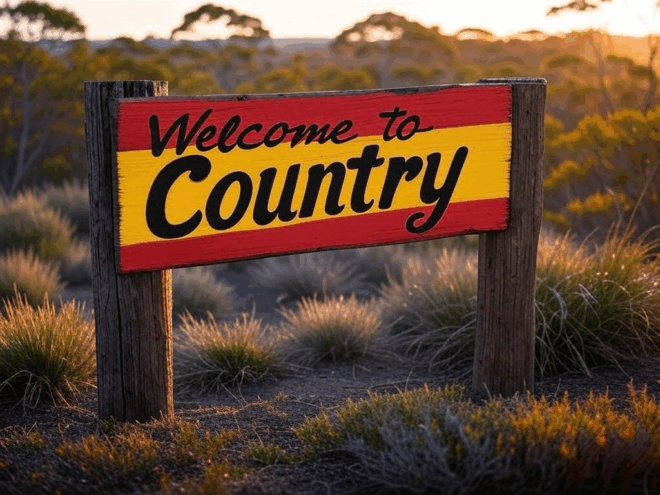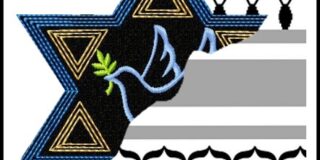
Abstract
The “Welcome to Country” ceremony, a traditional Indigenous acknowledgment of land custodianship, has been politicised in Australia as a symbol of cultural division, largely through the rhetoric of Opposition Leader Peter Dutton. This paper argues that the outrage over Welcome to Country is a manufactured crisis, functioning as a dog whistle to appeal to Australia’s racist underbelly while undermining decades of Indigenous reconciliation efforts. By framing a modest cultural practice as divisive, Dutton exploits latent prejudices to consolidate conservative support, distracting from substantive policy challenges and eroding progress toward unity. This analysis traces the history of reconciliation in Australia, examines the mechanics of Dutton’s political strategy, evaluates its impact on Indigenous communities and national cohesion, and proposes strategies for advancing reconciliation in the face of such divisive tactics.
Introduction
Reconciliation between Indigenous and non-Indigenous Australians has been a cornerstone of national policy since the late 20th century, aiming to address the legacies of colonisation, dispossession, and systemic inequality. Central to this process are symbolic gestures like the Welcome to Country ceremony, which acknowledges Traditional Custodians and fosters mutual respect. Yet, this practice has become a flashpoint in Australia’s culture wars, with Opposition Leader Peter Dutton framing it as an emblem of progressive overreach that threatens national unity. Far from a substantive critique, this outrage is a calculated dog whistle – a coded appeal to a segment of the population harbouring racial prejudices. This paper contends that Dutton’s politicisation of Welcome to Country is a cheap grab at outrage, exploiting Australia’s racist underbelly to rally conservative support while sabotaging reconciliation efforts. Through a comprehensive analysis, this paper explores the history of Indigenous reconciliation, the mechanics of Dutton’s strategy, its impact on reconciliation, and pathways for advancing unity in a polarised political climate.
Historical Context: Indigenous Reconciliation in Australia
Reconciliation in Australia emerged as a formal national project in the late 20th century, responding to centuries of colonial violence, dispossession, and systemic marginalisation of Indigenous peoples. Key historical events shaped this process:
1. Colonisation and Dispossession (1788–1900s): British colonisation decimated Indigenous populations through violence, disease, and land theft. Policies like the forced removal of Indigenous children (the Stolen Generations) entrenched intergenerational trauma.
2. Civil Rights and Land Rights (1960s–1980s): The 1967 referendum, which granted the federal government power to legislate for Indigenous peoples, and the 1976 Aboriginal Land Rights Act marked early steps toward recognising Indigenous rights. The 1992 Mabo decision, overturning the doctrine of terra nullius, was a landmark in acknowledging native title.
3. Formal Reconciliation (1990s–2000s): The Council for Aboriginal Reconciliation, established in 1991, formalised efforts to bridge divides. The 1997 Bringing Them Home Report exposed the Stolen Generations’ horrors, culminating in the 2008 National Apology by Prime Minister Kevin Rudd. Symbolic gestures, including Welcome to Country and Acknowledgment of Country, became widespread as expressions of respect.
4. Contemporary Challenges (2010s–Present): The 2017 Uluru Statement from the Heart called for a First Nations Voice to Parliament, treaty processes, and truth-telling. While supported by many, it faced resistance, culminating in the 2023 Voice referendum’s defeat, which exposed persistent divisions.
The Welcome to Country ceremony, rooted in Indigenous protocols, gained prominence during the reconciliation era. Typically brief (1–5 minutes), it acknowledges Traditional Custodians and their connection to land, delivered at public events like parliamentary sessions, schools, or sporting matches. Far from radical, it is a modest gesture of inclusion, endorsed by both major parties until recent politicisation.
The Welcome to Country Controversy: A Manufactured Crisis
Despite its reconciliatory intent, Welcome to Country has been weaponised by conservative figures, particularly Peter Dutton, as a symbol of cultural overreach. Dutton’s critiques, often framed as concerns about the ceremony’s frequency or appropriateness, portray it as divisive or bureaucratic. This rhetoric transforms a minor practice into a major political issue, inflating its significance to stoke outrage. The controversy is not about policy substance – few Australians are materially affected by a brief acknowledgment – but about what Welcome to Country represents: Indigenous visibility and the acknowledgment of historical injustices.
This politicisation aligns with broader culture-war tactics, where symbolic issues are amplified to polarise voters. Dutton’s strategy mirrors global trends, such as U.S. debates over critical race theory or U.K. controversies over immigration. By targeting Welcome to Country, he taps into a narrative of cultural alienation, pitting “ordinary Australians” against progressive elites and Indigenous advocates. This manufactured crisis distracts from pressing issues like housing affordability, climate change, and Indigenous socioeconomic disparities, prioritising electoral gains over national progress.
Peter Dutton’s Dog Whistle: Mechanics and Motives
Dutton’s criticism of Welcome to Country exemplifies the dog-whistle tactic – a coded message that appears innocuous to the broader public but resonates with a specific, often prejudiced, audience. His rhetoric is carefully calibrated:
• Coded Language: Dutton avoids overt racism, using terms like “division,” “overreach,” or “political correctness” to critique Welcome to Country. For example, suggesting ceremonies are performed too frequently or in inappropriate contexts (e.g., corporate events) implies a reasonable concern about bureaucracy. The subtext, however, signals discomfort with Indigenous empowerment, resonating with those skeptical of reconciliation.
• Media Amplification: Dutton times his remarks to align with media cycles, ensuring coverage by sympathetic outlets. This provokes polarised debates, with conservative commentators framing Welcome to Country as a progressive imposition. Social media platforms like X amplify this, with posts often devolving into racist tropes, reinforcing Dutton’s narrative.
• Electoral Strategy: The dog whistle targets a small but politically significant minority – approximately 15-20% of Australians who express unease with reconciliation efforts (Australian National University, 2023 Social Cohesion Report). This group, concentrated in regional and outer-suburban electorates, aligns with the Liberal-National Coalition’s base, where economic insecurity and cultural conservatism intersect.
Dutton’s motives are clear: consolidate conservative support by exploiting cultural wedges. This tactic is not new; his past rhetoric on immigration and African gang violence employed similar strategies. By inflaming the Welcome to Country debate, Dutton distracts from policy failures, such as the Coalition’s opposition to meaningful climate action or Indigenous justice reforms, while rallying voters through fear and resentment.
The Racist Underbelly: Understanding the Audience
Australia’s history as a settler-colonial state has left a legacy of racial tension. While overt racism has declined, subtle prejudices persist, often manifesting as discomfort with Indigenous recognition or multiculturalism. The 2023 Voice referendum, rejected by 60% of voters, exposed this divide, with opposition often rooted in skepticism about Indigenous “special treatment” rather than policy specifics. Dutton’s dog whistle targets this latent “racist underbelly” – a minority who view reconciliation as a zero-sum game, where Indigenous gains come at the expense of non-Indigenous Australians.
This audience is not monolithic but includes:
• Cultural Conservatives: Older, white Australians, particularly in regional areas, who feel alienated by social change and perceive Indigenous recognition as a challenge to Anglo-Australian identity.
• Economic Disenfranchised: Voters in economically strained areas, where resentment toward perceived “elites” (including progressive advocates) is high. Indigenous issues become a scapegoat for broader frustrations.
• Fringe Extremists: A smaller group with overtly racist views, amplified on platforms like X, who use Welcome to Country as a proxy for broader anti-Indigenous sentiment.
Dutton’s rhetoric provides a veneer of legitimacy for these grievances, allowing prejudice to be expressed under the guise of defending “common sense.” This normalises divisive discourse, emboldening fringe voices and eroding the social contract underpinning reconciliation.
Impact on Reconciliation Efforts
The politicisation of Welcome to Country has profound consequences for Indigenous reconciliation:
1. Undermining Symbolic Progress: Welcome to Country is a cornerstone of reconciliation, symbolising respect and acknowledgment. By framing it as divisive, Dutton delegitimises this gesture, reinforcing perceptions that Indigenous culture is incompatible with national identity. This alienates Indigenous communities, who already face systemic barriers, including an 8-year life expectancy gap and incarceration rates 10 times higher than non-Indigenous Australians (Australian Institute of Health and Welfare, 2024).
2. Deepening Division: The controversy pits communities against one another, reviving old tensions. The 2023 Voice referendum demonstrated how divisive rhetoric can fracture public support for reconciliation, with misinformation and fearmongering overshadowing substantive debate. Dutton’s tactics risk a similar outcome, entrenching mistrust.
3. Distraction from Structural Issues: Reconciliation requires addressing structural inequities, such as Closing the Gap targets or implementing the Uluru Statement’s recommendations. The Welcome to Country debate diverts attention from these priorities, consuming political capital that could be spent on policy reform. For example, only 4 of 17 Closing the Gap targets are on track (Productivity Commission, 2024), yet cultural controversies dominate headlines.
4. Normalising Prejudice: By mainstreaming criticism of Indigenous practices, Dutton creates a permissive environment for racism. This emboldens extremist voices, as seen in online spaces where Welcome to Country critiques often escalate into broader attacks on Indigenous rights. This erodes social cohesion, making reconciliation harder to achieve.
Global Parallels: Culture Wars and Reconciliation
Dutton’s tactics reflect a global trend of culture-war politics, where symbolic issues are weaponised to polarise electorates. In the U.S., debates over critical race theory and Confederate monuments parallel Australia’s Welcome to Country controversy, framing minority recognition as a threat to majority identity. In Canada, reconciliation with First Nations faces similar pushback, with conservative critics decrying “special rights.” These parallels highlight the adaptability of dog-whistle politics, which thrives on exploiting cultural anxieties to obscure structural failures.
Australia’s context is unique, however, given its unresolved colonial legacy. Unlike Canada or New Zealand, Australia lacks a treaty with Indigenous peoples, and the 2023 Voice referendum’s failure underscores the fragility of reconciliation. Dutton’s rhetoric risks regressing progress, reviving narratives of Indigenous “otherness” that reconciliation seeks to dismantle.
Pathways for Advancing Reconciliation
To counter the divisive impact of dog-whistle politics and advance reconciliation, Australia must adopt a multifaceted approach:
1. Strengthen Education and Truth-Telling: Public understanding of Indigenous history and reconciliation remains limited. Implementing the Uluru Statement’s call for truth-telling, through national curricula and community programs, can counter misinformation and foster empathy. Schools should teach the significance of practices like Welcome to Country, emphasising their reconciliatory purpose.
2. Promote Indigenous Leadership: Amplifying Indigenous voices in policy and public discourse ensures reconciliation is driven by those most affected. Supporting Indigenous-led initiatives, such as cultural festivals or community dialogues, can normalise practices like Welcome to Country and reduce their politicisation.
3. Reframe the Narrative: Political and media leaders must reframe Welcome to Country as a unifying, rather than divisive, practice. Highlighting its brevity and inclusivity can defuse conservative critiques, emphasising shared national values over cultural conflict.
4. Address Structural Inequities: Reconciliation requires tangible progress on Closing the Gap, native title, and justice reforms. Policy focus should shift from symbolic debates to systemic change, addressing Indigenous socioeconomic disparities and implementing the Uluru Statement’s recommendations.
5. Challenge Divisive Rhetoric: Civil society, including media and advocacy groups, must call out dog-whistle tactics. Fact-checking platforms and public campaigns can expose the manipulative intent behind controversies, redirecting discourse toward substantive issues.
Conclusion
The outrage over Welcome to Country is a manufactured crisis, a cheap grab at political capital orchestrated by Peter Dutton to exploit Australia’s racist underbelly. By inflating a modest cultural gesture into a symbol of division, Dutton undermines decades of Indigenous reconciliation efforts, rallying a vocal minority while distracting from pressing national challenges. This dog-whistle tactic is not leadership but pandering, prioritising electoral advantage over unity. Reconciliation, a fragile yet essential project, requires resilience against such divisive strategies. By strengthening education, promoting Indigenous leadership, reframing narratives, addressing structural inequities, and challenging divisive rhetoric, Australia can move beyond the politics of outrage toward a more inclusive future. The Welcome to Country controversy is a test of national character – a chance to reject dog whistles and reaffirm a commitment to reconciliation and unity.
References
• Australian Institute of Health and Welfare. (2024). Indigenous Health and Wellbeing.
• Australian National University. (2023). Social Cohesion Report.
• Productivity Commission. (2024). Closing the Gap Annual Report.
• Uluru Statement from the Heart. (2017). Retrieved from [ulurustatement.org].


